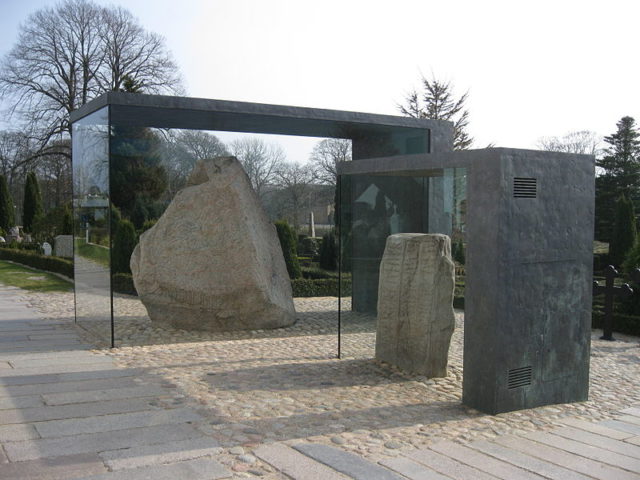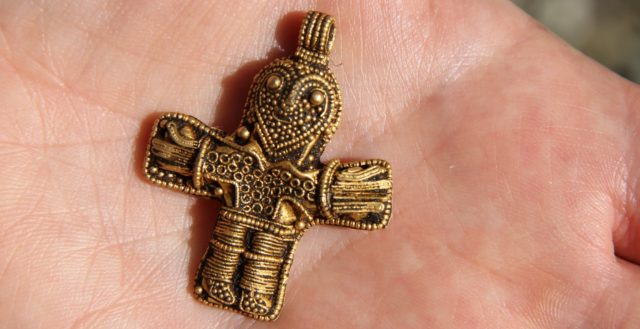The tiny gold items, created in the image of Christ on the cross, are thought to make up Denmark’s oldest crucifix. This newly discovered crucifix will show that Danes adopted the Christian faith earlier than previously thought.
An uncommon Viking crucifix pendant was discovered in a Danish field by an amateur metal detectorist two weeks before Easter. The small gold item, created in the shape of a man with outstretched arms, resembles the image of Christ on the cross.
It’s approximated to be Denmark’s oldest crucifix. Dating back to the first half of the 10th century, the pendant is evidence of early Christianity in Denmark, according to experts at the Viking Museum located at Ladby, where the crucifix is currently kept.

It is said by the museum to be older than Harald Bluetooth’s runic stone in Jelling. The stones in the town of Jelling have a figure on the cross to show respect to Harald Bluetooth’s conversion of the Danes to Christianity. Up until now, the large rune stones were calculated to date back to 965 AD. They were thought to be the earliest picture of Jesus on the cross in Denmark.
The precious item was discovered by Dennis Fabricius Holm in the fields near a church village of Aunslev, on the Danish island Funen. It is very lucky that a piece of jewelry this small endured for the last 1,100 years in the earth.
The figure measures only 1.6 inches in height and weighs about 0.45 ounces. While the back surface is even, the front is created of finely jointed gold threads and small filigree pellets. Located at the top is a small eye for a chain to be attached.
It is stated by the museum that it looks similar to the gilded silver cross that was discovered in 1879 in Birka, close to Stockholm in Sweden. It was in a female’s grave from the Viking Age. This silver cross dated back to the first half of the 10th century. Yet the Aunslev cross is the first Danish specimen that is in full figure.
It was most likely worn by a Viking woman. It has not yet been decided if the cross was to display that she was a Christian or if it was just a part of the pagan Vikings’ style.

According to the Swedish archaeologist Martin Rundkvist, who first announced the discovery on his blog, the crucifixes are too much alike for more than one or two people to have created them.
The first crucifix was discovered at Birka close to Stockholm. Yet the second, third, and the fourth one were discovered close to Hedeby, Denmark. This is probably where all of them were produced.
The Aunlev cross will be placed on exhibit at the Viking Museum in Ladby, until the Easter holiday. Then it will be conveyed to a lab for further preservation. In the summer it will become part of an exhibit in the museum that will display several recent Viking Age discoveries that were made using metal detectors.
